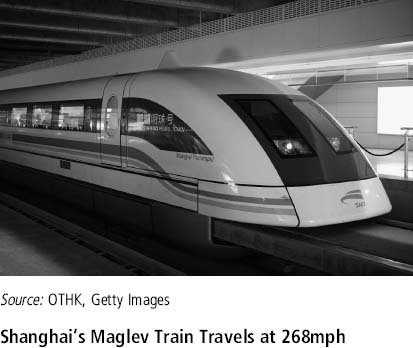CHAPTER TWO
THE DEVELOPMENT OF CHINA'S ECONOMY & INFRASTRUCTURE
PETER LEVESQUE
Little more than a decade ago the primary mode of transportation in China's major cities was the bicycle. Road infrastructure across much of China was sub-standard and poorly planned. Hotels were uncomfortable and English-speaking staff was a novelty. But there was a feeling of immense anticipation in China at that time. As construction cranes filled city skylines and welders could be seen working through the night, it was clear that something big was happening. China was modernizing at an incredible pace, and the 2008 Olympic Games was set to be the country's official coming-out party.

Aside from the occasional inconvenience of obtaining a travel visa, much of the hassle associated with getting around mainland China has disappeared, at least in the major cities. Shanghai's high-speed Maglev train is an example of China's push toward state-of-the-art transportation. The focus now shifts toward building infrastructure that connects the hinterland provinces with China's urban centers. These Government initiatives will play a major role in reshaping both the international and domestic supply chains of tomorrow, determining where future production will take place, and how products will get to market.
First and foremost, it is important to understand that the Chinese view their infrastructure development as ...
Get The Shipping Point: The Rise of China and the Future of Retail Supply Chain Management now with the O’Reilly learning platform.
O’Reilly members experience books, live events, courses curated by job role, and more from O’Reilly and nearly 200 top publishers.

